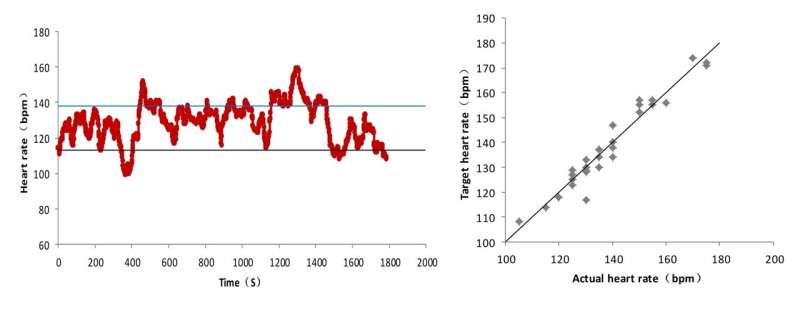Verification of the model's effectiveness in free exercise. (1). Heart rate curve of one exercise (2). Scatter plot of expected heart rate and actual heart rate. Credit: ZHAO Huanhuan
A new self-control method of exercise intensity based on Rating of Perceived Exertion (RPE), developed by researchers from the Hefei Institutes of Physical Science (HFIPS) of the Chinese Academy of Sciences, achieved accurate control of exercise intensity without the aid of any equipment.
"Exercise is a good way to prevent and control many chronic diseases, but what matters most is the intensity," said Zhao Huanhuan, a member of the team, "some electronic products like ports watches can help to monitor heart rate, but there should be more convenient ways. Current RPE method can roughly determine exercise intensity, but it is not accurate enough."
In this research, an accurate conversion model using Gaussian process regression was constructed. The researchers carried out exercise testing among large groups and adjusted indicators such as age, gender, resting heart rate.
The predicted value of the model in the test has high correlation with the actual value, which can effectively realize the conversion from individual exercise heart rate to perceived exertion rate.
In addition, the researchers applied the model to people age 23 to 65. The deviation of the actual heart rate from the target heart rate was just ±1.98%, which further confirmed the effectiveness of this method in mass fitness.
The research results have been applied to exercise intervention of chronic disease in the demonstration bases of HFIPS.
Provided by Chinese Academy of Sciences
























